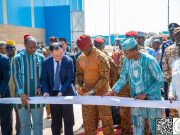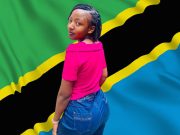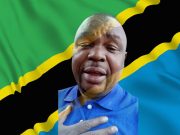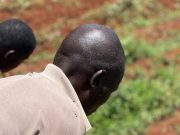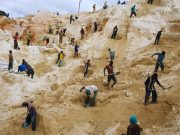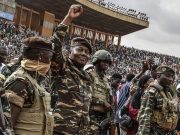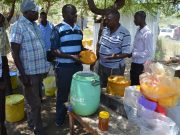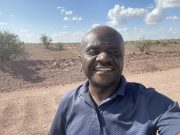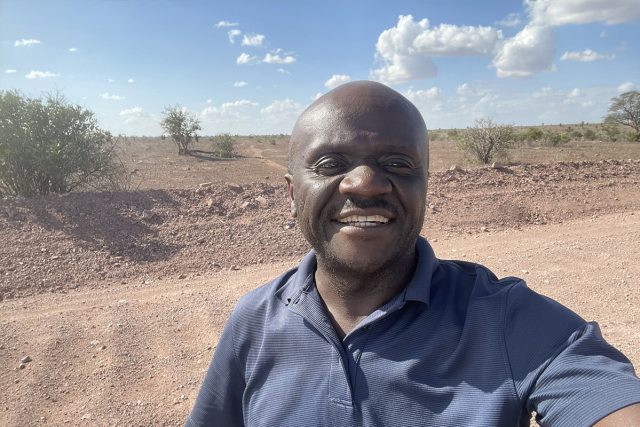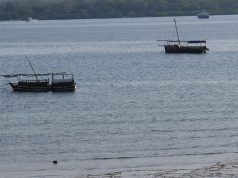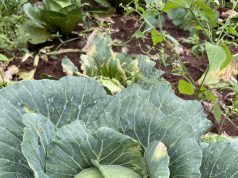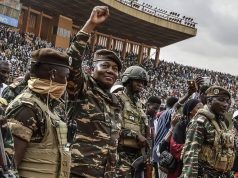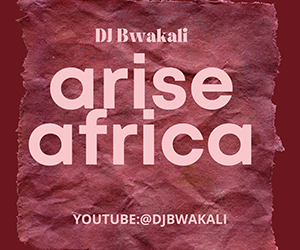I keep coming back to a single graph. It shows the number of Africans living on less than $2.15 a day. More than 460 million people. That is one in three Africans. And yet this is the same continent that produces the oil that fuels Europe, the cobalt that powers Silicon Valley, the gold that backs up international banks, and the coffee that wakes the world every morning.
Something doesn’t add up. Unless you accept the truth that Africa’s poverty is not an accident. It is a business model.
Poverty as a Pyramid
The aid industry has built a pyramid that rests on African suffering. At the top sit donor governments and banks. Beneath them are the aid agencies, international contractors, and foreign NGOs. At the very bottom are the African households that carry the weight. Aid is sold as charity. In reality, it is commerce.
In 2023, the OECD admitted that 22 percent of global aid never left donor countries. It was spent at home on consultants, refugees, or administrative costs. The British government has even counted the cost of housing refugees in the UK as aid to Africa. Every year, the world trumpets billions flowing to the continent. In truth, the cash rarely makes it past Western capitals.
Money Out, Not In
Look deeper and the numbers get worse. For every dollar that enters Africa as aid, at least two dollars leave through debt repayments, illicit financial flows, and profit repatriation. Since 1980, more than $1.3 trillion has bled out of Sub-Saharan Africa. Trillion with a “T.” It is the quiet siphoning of capital that never makes front-page news.
Debt has become the sharpest tool of this system. In the 1980s, the IMF and World Bank forced Structural Adjustment Programs on African governments. The message was simple: cut your schools, cut your hospitals, cut your food subsidies, or no loans. The result was brutal. Zambia’s hospitals ran out of medicines. Nigeria’s naira was devalued overnight. Ghana introduced school fees. An entire generation paid the price.
Today, Africa spends more on debt service than on education or health. Kenya, Ghana, and Zambia are examples of nations that live under this weight. Children study under trees while their governments wire dollars to Western creditors. This is not incompetence. It is design.
The Middlemen Who Profit
Every loan creates contracts. The contractors are almost always Western firms. They build highways at inflated costs. They manage energy projects with overpriced equipment. They pocket the profits, repatriate them, and leave behind debt that ordinary Africans must repay.
Take the Democratic Republic of Congo. The world depends on Congolese cobalt. More than three-quarters of global supply comes from Congolese mines. Without that cobalt, there would be no Teslas, no iPhones, no electric cars. Yet Congolese miners work for less than two dollars a day. The supply chain flows from Kolwezi to Cupertino, but the wealth never loops back.
Food aid is no better. When drought hits Somalia or famine strikes Ethiopia, American grain is shipped in. But by law, that grain must be grown by American farmers, shipped on American ships, and distributed by American NGOs. The system props up U.S. agriculture while distorting African food markets. African farmers lose buyers. Local systems collapse. Aid becomes dependency disguised as generosity.
Health as a Market
Even sickness is monetized. During COVID-19, Africa was last in line for vaccines. Not because the continent could not pay. But because pharmaceutical giants in the West patented the vaccines and refused to share them. The World Trade Organization failed to secure broad waivers for poorer countries. It was déjà vu. In the 1990s, HIV drugs were priced so high that millions of Africans died. The global health system is a market, and in that market, Africans are the least valuable customers.
Children as Fundraising Tools
The most painful part of this economy is what happens to children. Across Uganda, Sierra Leone, and beyond, orphanages have been caught recruiting children who still had parents. Why? Because every African child became a story for Western fundraising. The more children they displayed, the more money rolled in. The faces of our children turned into commodities.
Receipts of Betrayal
And then there is the accounting trick that makes the betrayal plain. In 2023, the world reached a record: 22 percent of global aid never crossed donor borders. Aid is being domesticated. Politicians in donor countries redefine it to meet their own budgets and politics. Africans remain the eternal subjects of aid theater while the actual cash circulates in London, Paris, and Washington.
What Actually Works
There are solutions. Localize procurement so African farmers and builders get the contracts. Audit debt and cap repayments so budgets can breathe. Add value to cobalt, copper, and lithium within Africa instead of exporting raw ore. Break the tied food aid rules and buy African food first. Track every dollar through digital customs and open ownership registers to shut down illicit flows. Build sovereign health systems through African vaccine hubs and laboratories.
These are not radical dreams. They are practical steps to reclaim a system that has been rigged for decades.
Time to Reframe the Graph
The poverty graph should not be seen as a humanitarian tragedy. It should be seen as a balance sheet. It tells us who profits and who pays. The West has built an economy where African poverty is the raw material. Our suffering fuels their wealth. Our debts keep their banks solvent. Our resources keep their industries humming.
The truth is that poverty in Africa is not a failure of Africans. It is the success of a system designed to extract from Africa.
And that is why the question must be asked again and again: Who gets rich off Africa’s poverty? The answer is not the African mother selling vegetables in Kibera. It is not the Congolese miner in Kolwezi. It is not the Ghanaian child studying under a tree. The ones who get rich live in London, Paris, and New York.
Until we name them, expose them, and build our own systems, Africa will remain trapped at the bottom of a pyramid that was never designed to let us climb.
This is not just analysis. This is a call. An African Awakening.






